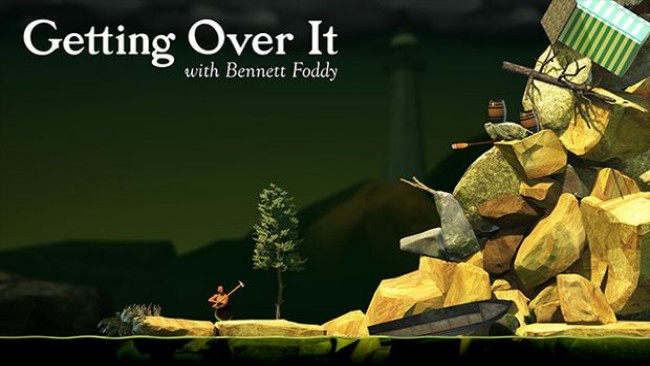

#Getting over it download file pdf
Here is the updated HTML anchor element for downloading the PDF document: For URLs with a HTTP Content-Disposition header that specifies a filename - the header filename has a higher priority than the value of the download attribute.Besides HTTP(s) URLs, it also supports blob: and data: URLs - which makes it very useful for downloading content generated programmatically with JavaScript.Hence, it cannot be used to download resources served from a different origin In compliance with the same-origin policy, this attribute only works for same-origin URLs.There are a few noteworthy facts about the behavior of the downloadattribute: However, the user can still modify the filename in the save prompt that pops-up. The download attribute can be given a valid filename as its value. The download attribute is used to inform the browser to download the URL instead of navigating to it - hence a prompt shows up, requesting that the user saves the file. In HTML 5, a new download attribute was added to the anchor element. Here is a conventional HTML anchor element linking to a PDF document: A basic HTML anchor element () The download attribute The URL of the linked resource is specified in the href attribute of the anchor element. Anchor elements are useful for adding hyperlinks to other resources and documents from an HTML document. For example, click to save a photo or download a report.Īchieving such a behavior in the browser is possible with HTML anchor elements ( ). For web applications, the desired behavior will be - downloading a file in response to a user interaction. The scenario described above is not feasible in web applications. When you try accessing that URL on your web browser, it prompts you to download the resource file - whatever the file is. Let’s say you have the URL to a downloadable resource. Most HTTP clients will prompt the user to download the resource content when they receive a response from a server like the one above. Now the server enforces a download of the GIF image. Sample HTTP Response for downloading a GIF image - the asterisks(*) represent the binary content of the image Here is what the HTTP response for the GIF image should look like to enforce file download: The disposition parameters are additional parameters that specify information about the body part or file such as filename, creation date, modification date, read date, size, etc. attachment - The body part is separate from the main content of the message and should not be displayed automatically except when prompted by the user.inline - The body part is intended to be displayed automatically when the message content is displayed.

The disposition type is usually one of the following: This header provides information on the disposition type and disposition parameters. However, it can be interpreted by several HTTP clients including web browsers. The Content-Disposition header was originally intended for mail user-agents - since emails are multipart documents that may contain several file attachments.

The Content-Disposition header is the right header for specifying this kind of information. To inform the client that the content of the resource is not meant to be displayed, the server must include an additional header in the response.
#Getting over it download file full
Click here to see the full demo with network requests The desired behavior is that the image should be downloaded not displayed. When the client (web browser in this case) receives this HTTP response, it simply displays or renders the GIF image - which is not the desired behavior. The response also contains some headers that give the client some information about the nature of the content it receives - in this example response, the Content-Type and Content-Length headers provide that information. In this response, the server simply serves the raw content of the resource ( represented with the asterisks - *) which will be received by the client.

Sample HTTP Response for a GIF image - the asterisks(*) represent the binary content of the image Here is what the response from the server could possibly look like: Though the diagram indicates the communication flow, it does not explicitly show what the request from the client looks like or what the response from the server looks like. The orange line shows the flow of the response from the server back to the client. In this diagram, the green line shows the flow of the request from the client to the server over HTTP. Schematic of Client-Server communication in fetching a file via HTTP


 0 kommentar(er)
0 kommentar(er)
